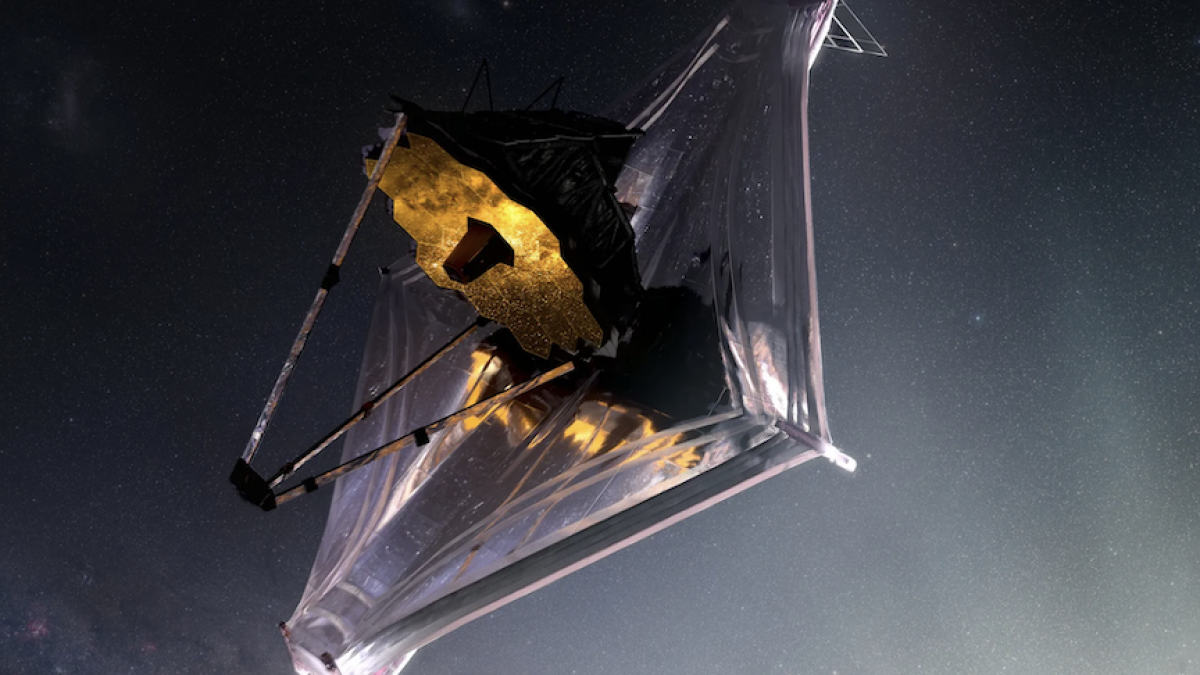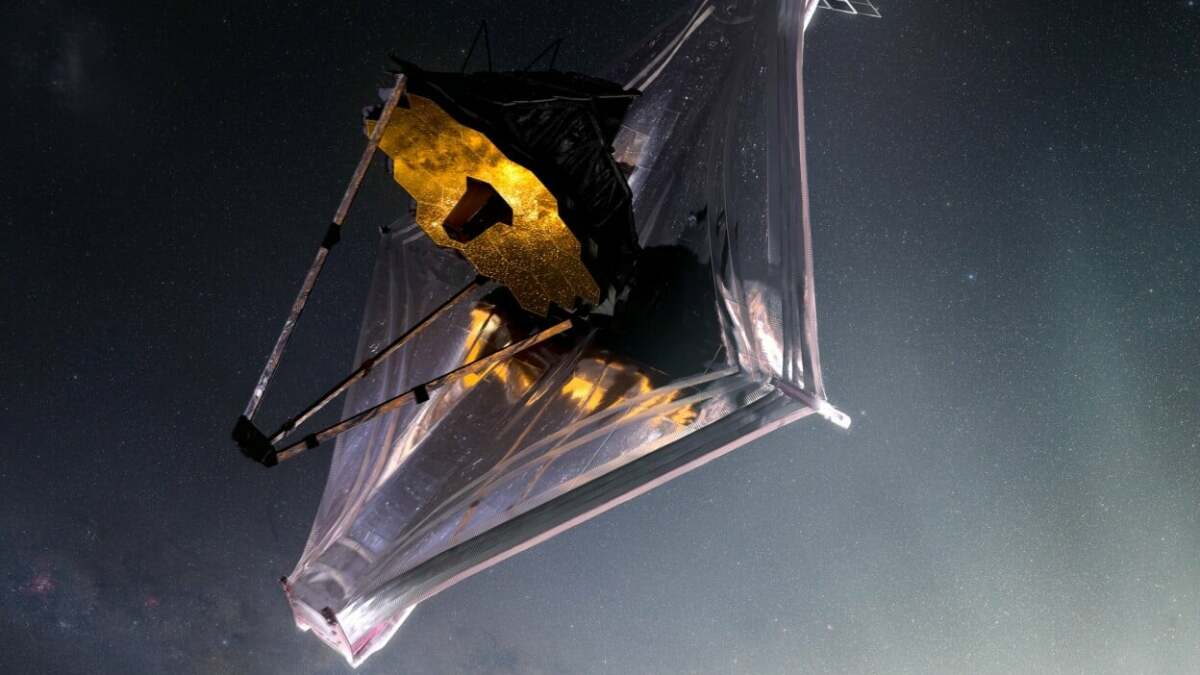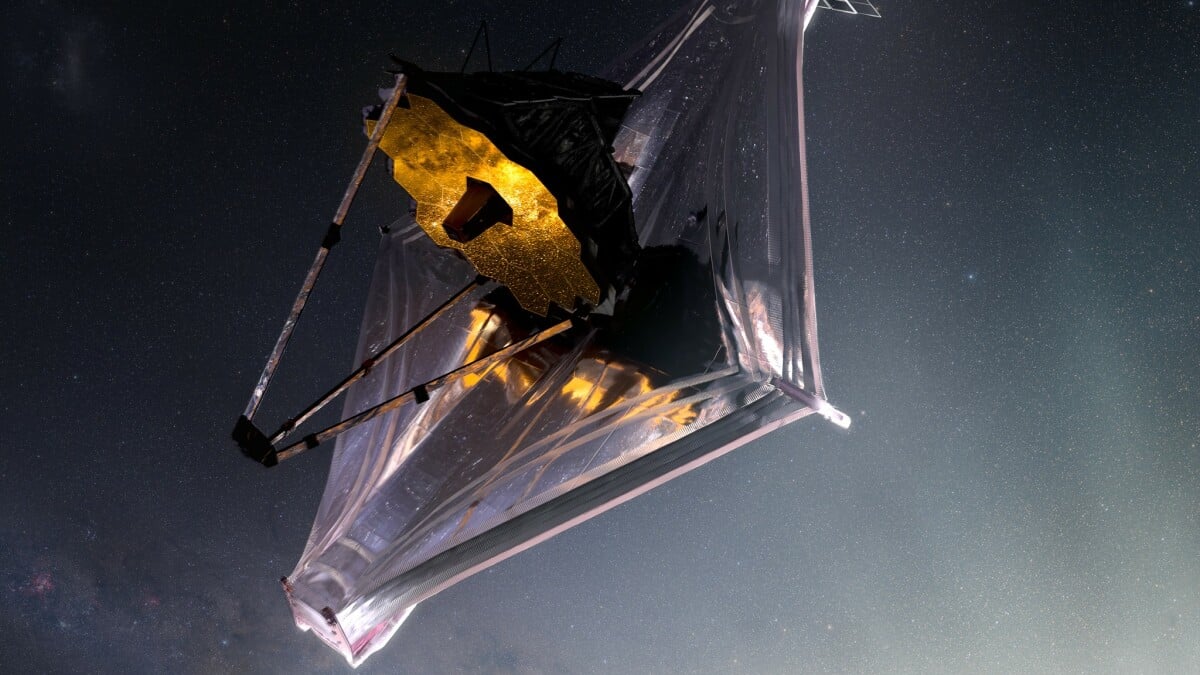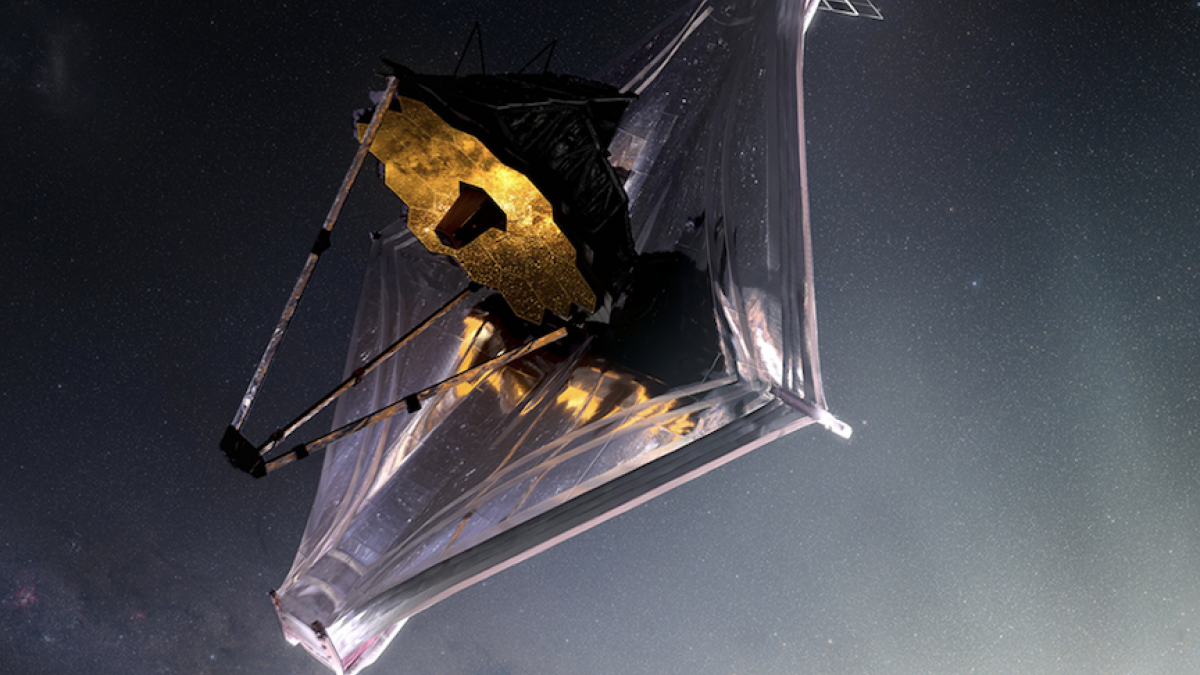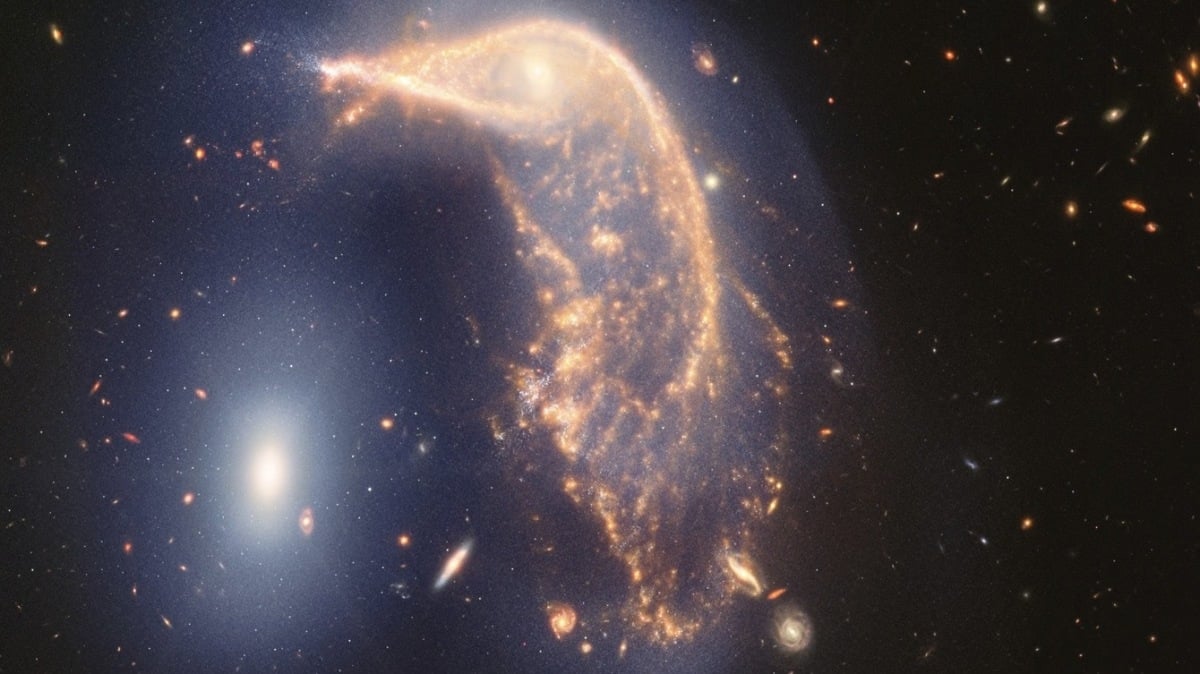
The observatory’s infrared view of space has been a game changer for scientists.
The James Webb Space Telescope observed two galaxies nicknamed the Penguin and Egg. Credit: NASA / ESA / CSA / STScI
When NASA‘s Hubble Space Telescope observed an odd couple of galaxies about a decade ago, they looked like a penguin and egg, with plenty of breathing room between them.
But in the James Webb Space Telescope‘s infrared vision, the two suddenly appear joined in space. What looked like a reddish-brown back vein running down the Penguin’s body in the Hubble image suddenly faded in Webb’s view — but also extended like an arch connecting to the Egg, pictured as the glowing light on the left side of the image.
The Space Telescope Science Institute in Baltimore, which runs both Hubble and Webb, released the new image on Friday, recognizing Webb’s second anniversary of scientific observations.
A comparison of the Hubble Space Telescope’s visible-light image, left, to the infrared view by the James Webb Space Telescope. Credit: NASA / ESA / CSA / STScI
Webb launched from Earth on Christmas morning in 2021, and is now orbiting the sun nearly 1 million miles away. NASA deputy administrator Pam Melroy, a former astronaut, has said the team expects the telescope to work for a long time. It has enough fuel on board to support research for at least the next 20 years.
NASA has promised the new telescope would crack the universe wide open with its penetrating vision and science capabilities, bringing humankind in on secrets of how this all began. Astronomers who saw sneak peeks of the first images told reporters they had chills or an “ugly cry” as some of the very first galaxies to exist popped into focus.
Researchers say Webb has already ignited a golden age in our understanding of the cosmos. The powerful telescope is studying a period less than 300 million years after the Big Bang, when many of the first stars and galaxies were born. Scientists have also used it to peer into the atmospheres of other worlds.
Mashable Light Speed
A spectacular new view of galaxies captured by the James Webb Space Telescope in deep space, billions of light-years away. Credit: ESA Webb / NASA / CSA / L. Bradley (STScI) / A. Adamo (Stockholm University) / Cosmic Spring collaboration
So far it has not disappointed: Webb has found galaxies that seem far too mature for their age in the early universe, giving astrophysicists a new puzzle to solve, and potential habitable worlds with hints of air.
“Webb is pushing the frontiers of exoplanet characterization to rocky planets,” said Renyu Hu, a NASA researcher, in a statement earlier this year. “It is truly enabling a new type of science.”
In the new Penguin and Egg image by Webb, the two galaxies, collectively known as Arp 142, sit about 100,000 light-years apart and are some 326 million light-years away from Earth in the southern constellation Hydra. That blue-tinted haze connecting them is an amalgam of stars and gas, scientists say, brewing as the galaxies interact.
Signs of those interactions can be found in key locations of the image.
“The galaxies’ ‘dance’ gravitationally pulled on the Penguin’s thinner areas of gas and dust, causing them to crash in waves and form stars,” according to the institute. “Look for those areas in two places: What looks like a fish in its ‘beak’ and the ‘feathers’ in its ‘tail.'”
The cosmic twirling and whirling will eventually cause the pair of galaxies to merge hundreds of millions of years in the future. It’s likely the same thing that will happen to our galaxy with another galactic neighborhood, but not anytime soon.
“For context, the Milky Way galaxy and our nearest neighbor, the Andromeda Galaxy, are about 2.5 million light-years apart,” according to the institute. “They too will interact, but not for about 4 billion years.”
Elisha Sauers writes about space for Mashable, taking deep dives into NASA’s moon and Mars missions, chatting up astronauts and history-making discoverers, and jetting above the clouds. Through 17 years of reporting, she’s covered a variety of topics, including health, business, and government, with a penchant for public records requests. She previously worked for The Virginian-Pilot in Norfolk, Virginia, and The Capital in Annapolis, Maryland. Her work has earned numerous state awards, including the Virginia Press Association’s top honor, Best in Show, and national recognition for narrative storytelling. For each year she has covered space, Sauers has won National Headliner Awards, including first place for her Sex in Space series. Send space tips and story ideas to [email protected] or text 443-684-2489. Follow her on X at @elishasauers.
This newsletter may contain advertising, deals, or affiliate links. Subscribing to a newsletter indicates your consent to our Terms of Use and Privacy Policy. You may unsubscribe from the newsletters at any time.

